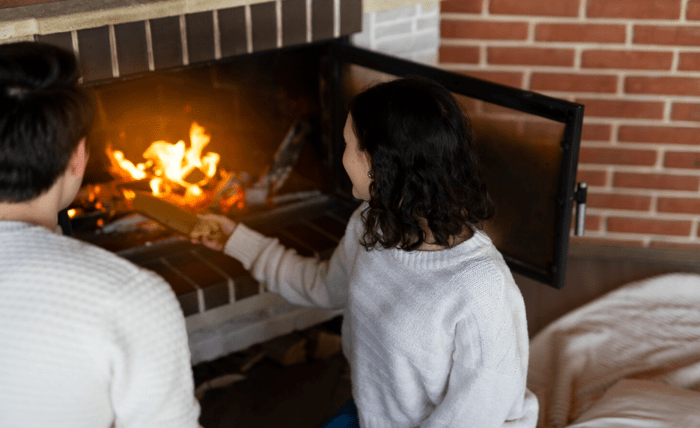Fireplaces have long been a source of warmth and ambience in a home, but not every home can accommodate a traditional gas or wood fireplace and chimney. That is where ventless fireplaces come into the picture. Also known as vent-free or unvented fireplaces, these units have become increasingly popular because they are so convenient and efficient. What they deliver comes along with their own special advantages and some safety concerns.
What Are Ventless Fireplaces?
Ventless fireplaces burn gas as fuel, natural gas or propane, most typically, and do not need a chimney or vent. Instead of pushing combustion gases out into the atmosphere, they burn with such efficiency that they create byproducts (primarily carbon dioxide and water vapour) that are vented directly into the room.
This type of construction makes them easy to install where conventional fireplaces would be impractical, e.g., in apartments, cramped living rooms, or basements. They are generally wall-mounted, freestanding, or installed as part of furniture-style surrounds, offering design flexibility.
Advantages of Ventless Fireplaces
The most significant strength of ventless fireplaces is their ease of use and effectiveness.
Because no heat is lost down a flue, nearly all the warmth is retained indoors, making them highly energy-efficient. They also cost less to install because they do not include the cost of chimney construction or the requirement for extensive ventilation work. A standard installation can be completed in a day.
Their flexibility is the second advantage. You can purchase models to suit nearly any interior—woodland, modern, minimalist —and they can burn natural gas, propane, or even gel fuel. They provide instant atmosphere with the throw of a switch and are easier to maintain than wood-burning models since there’s no ash or soot to clean out.
The Drawbacks to Consider
Although handy, ventless fireplaces are not perfect. The biggest problem is air quality. Since the combustion gases stay inside, even slight inefficiencies can generate moisture, carbon dioxide, or in an exceedingly unlikely scenario, carbon monoxide accumulation. To help mitigate this issue, most units have built-in oxygen depletion sensors that will turn off the fireplace if oxygen levels drop.
Ventless systems also cause excess humidity, which can lead to condensation on windows and mould in poorly ventilated areas. Some complainants have also reported slight odours when the fireplace is first lit, particularly in smaller rooms.
Because of such issues, ventless fireplaces are prohibited or strictly regulated in certain locations. It is wise to check local building codes beforehand, purchase one, and ensure that your area meets code ventilation and room-size requirements.
Safety Guidelines and Tips
Safety should be of the utmost concern when an unvented fireplace is used. Proper usage and care can make all the difference between having a good time and a catastrophe.
- Install carbon monoxide detectors near the unit and in bedrooms.
- Don’t install them as a primary heating source for your home; they are supplemental heating devices.
- Have the system checked annually by a qualified service technician to determine if there is a gas leak or faulty sensors.
- Maintain good airflow by leaving an open door ajar or slightly cracking a window while the fireplace is operating.
By following these simple steps, you can enjoy the beauty and warmth of a ventless unit without ever compromising on safety.
Compared to Vented Fireplaces
Old-style vented fireplaces vent combustion gases outside, providing cleaner air inside but sacrificing more heat. Ventless models reverse that trade-off, improving efficiency but posing greater indoor air quality risks. The choice between the two generally comes down to your home’s design, your local climate, and your priorities between safety and performance.
Conclusion
For homes where conventional installations are impractical, ventless fireplaces offer a modern substitute. Although they have amazing energy efficiency, are simple to install, and come in a variety of fashionable designs, they need careful ventilation and upkeep planning.
Businesses like Woodland Direct provide a variety of safe, tried-and-true models to accommodate a range of room specifications and design preferences for homeowners looking for dependable fireplace alternatives.
Ultimately, a ventless fireplace is worth it if it is only installed correctly, used responsibly, and serviced with safety in mind.


